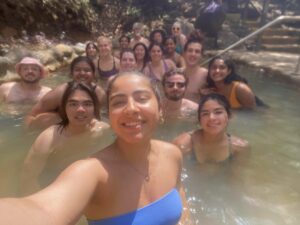While Costa is well known for its rich biodiversity, stunning beaches, and breathtaking landscapes, it is less well known that it’s home to several active volcanoes. Active volcanoes will likely erupt again in the future, which has shaped the country’s culture and way of life. Volcanoes are an integral part of Costa Rican culture, and they have a profound impact on the country’s history and traditions.

Volcanoes have been present in Costa Rica for millions of years, and their eruptions have significantly impacted the country’s history. One of the most important historical events associated with a Costa Rican volcano is the eruption of the Arenal volcano in 1968. This eruption destroyed 232 square meters of land and led to 87 deaths. It destroyed several towns and Villages and caused widespread damage to crops and infrastructure. The disaster led to a period of national mourning, and it is still remembered today as one of the most significant events in Costa Rican history. Now, when looking at the volcano, green vegetation surrounds the volcano as if the towns have beat the past eruption. The eruption also had a positive impact on the country. It drew national attention to Costa Rica, and the government used the disaster to develop the country’s infrastructure (e.g., buildings, roads, and power supplies) and improve its disaster preparedness. When visiting the Arenal volcano, I saw how much care the country had for volcanoes. The trails were well-kept and filled with signs of information based on the volcano and wildlife. Everywhere I looked, there were souvenirs or trinkets of volcanoes. In Mistico Park, visitors with physically limited abilities were able to access the trails since it was all on ramps rather than soil and rock. Thus, increasing the amount of people who can see the breathtaking volcanoes. However, citizens still fear about the chance of it erupting again and creating damage since the infrastructure was rebuilt in the same places where the damage occurred. Even so, the eruptions did produce fertile soil (Rich in nutrients necessary for plant growth).

The volcanic soil in Costa Rica is remarkably fertile and helps support the country’s massive coffee and banana industries. The ash and minerals left behind from volcanic eruptions provide the nutrients essential to grow these crops in large volumes. Many of Costa Rica’s coffee plantations are located on the slopes of volcanoes due to the rich soil. We were fortunate to visit and tour the Starbucks farm in Costa Rica, where they tested different coffee bean growing techniques. Not only did the tour guide speak about the farm, but also showed videos of the coffee making process, making it easier for people to understand. The farm had infinite rows of greenery. The air was fresh and clear of pollution, while the food taste was indescribable. Starbucks in New Jersey does not compare to Starbucks in Costa Rica. Since the farm uses its grown beans, the coffee is more decadent. The flavors were enhanced due to the rich soil. The richer soil also improves other types of foods like orange juice. The orange juice was sweet. Trying it surprised me because I expected it to be tangy. I was also surprised when eating three meals a day filled me up. Using one plate of food is not enough for me, so I snack; however, in Costa Rica, none of that was necessary. I had three meals a day and barely any snacks. The food filled me up quickly because it was not processed. The food also tasted better because of the rich soil and freshness.
The food we tried was one of the most famous Costa Rican dishes, Gallo Pinto, which combines rice and beans. The dishes are often made with beans grown in fertile volcanic soil, giving them a unique and delicious flavor. Volcanoes have also contributed to the country’s coffee culture. Costa Rica is known for its high-quality coffee, and volcanoes are one of the reasons why the coffee is so delicious. I also tried salchipapas, sliced hot dogs and French fries, and fajitas, steak with French fries. By far the best food I have had in a long time. It’s special to have tasted Costa Rican cuisine being a big foodie myself, influenced by eruptions decades ago.

Volcanoes are a primary tourist attraction in Costa Rica. Many visitors travel to Costa Rica specifically to see active volcanoes like Arenal and Poas, thus providing many jobs and economic opportunities, especially in rural areas. These active volcanoes create geothermal activity, heating nearby rock due to hot magma, which causes hot water to be released through openings. The geothermal activity creates dramatic landscapes, hot springs, and mud pods that captivate tourists and locals. It most definitely intrigued me. One of the things on my bucket list was to try hot springs, so being able to experience the pools germinated by the hot springs and be in the river heated by it was fascinating. I did not expect it to be so hot. It was relaxing and made me appreciate volcanos.
My goal was to take in everything from Costa Rica. To love every aspect and understand the significance and background. If I did not know about volcanos, I would not have appreciated the landscapes and food as much. This is also due to the great team that led us throughout Costa Rica, who taught us anything we missed at first glance. I am thankful that I had this experience with the class. Experiencing it with a group made the trip ten times more memorable, causing me to remember more and learn more. Since I loved the trip, I remember all the small details about the volcanos and scientific processes that contributed to what was around us. Using that knowledge, we could view the effects of volcanoes described in this blog in person. Volcanoes left an eternity impact on life in Costa Rica but also a significant impact on me.